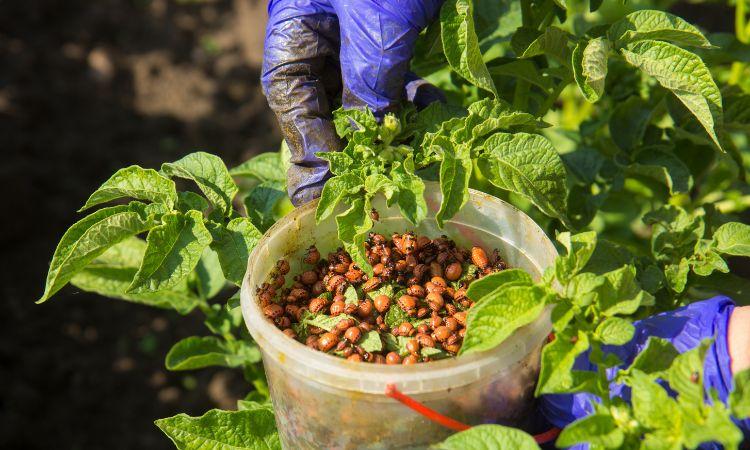The global agricultural landscape is undergoing a remarkable transformation, with an increasing emphasis on sustainable and environmentally friendly farming practices. As the world grapples with the challenges of feeding a growing population while mitigating the environmental impact of agriculture, a significant solution has emerged in the form of agricultural biologicals.
These products, which include biopesticides, biostimulants, and biofertilizers, have gained traction in recent years for their ability to promote sustainable agriculture. According to market research, the global agricultural biologicals market size is expected to grow at a CAGR (Compound Annual Growth Rate) of 12.5% during the period 2023-2028.
In this in-depth analysis, we will delve into the world of agricultural biologicals, exploring their advantages, market size and growth, key players, regulatory framework, case studies, challenges, and the promising future they hold for the agriculture industry.
I. Overview of Agricultural Biologicals
What are Agricultural Biologicals?
Agricultural biologicals encompass a wide range of products derived from natural sources such as microorganisms, plant extracts, and beneficial insects. These products are designed to enhance various aspects of agriculture, from pest management to soil health and crop nutrition.
Types of Agricultural Biologicals
-
Biopesticides: These are alternatives to chemical pesticides, utilizing living organisms or natural substances to control pests and diseases.
-
Biostimulants: Biostimulants are compounds that stimulate plant growth, enhance nutrient uptake, and improve stress tolerance in crops.
-
Biofertilizers: These products contain beneficial microorganisms that fix nitrogen, solubilize phosphates, and enhance nutrient availability to plants.
Historical Context and Evolution
The use of biological agents in agriculture has a rich history dating back centuries. Farmers have long employed practices such as crop rotation and composting to improve soil fertility and manage pests. However, the modern era has witnessed a more sophisticated approach to agricultural biologicals, with increased research and development in this field.
II. Advantages of Agricultural Biologicals
Reduced Chemical Pesticide Use
One of the most significant advantages of agricultural biologicals is their potential to reduce the reliance on chemical pesticides. Chemical pesticides have long been a cornerstone of conventional farming, but their adverse effects on human health, beneficial organisms, and the environment have raised concerns. Agricultural biologicals offer a safer and more sustainable alternative.
Improved Soil Health and Fertility
Healthy soil is the foundation of productive agriculture, and agricultural biologicals play a crucial role in maintaining and enhancing soil health. Biofertilizers, for instance, introduce beneficial microorganisms that enrich the soil with essential nutrients and promote overall soil fertility.
Enhanced Crop Resilience and Yield
Biostimulants and biopesticides contribute to increased crop resilience. Biostimulants improve a plant’s ability to withstand stressors like drought, extreme temperatures, and diseases. Biopesticides target specific pests and pathogens, reducing the damage caused to crops and ultimately leading to higher yields.
Environmental Benefits
The adoption of agricultural biologicals can have a positive impact on the environment. With fewer chemical pesticides in use, there is less chemical runoff into waterways, reduced harm to non-target organisms, and lower overall pollution.
III. Market Size and Growth
Current Market Size and Valuation
As of 2023, the agricultural biologicals market is valued at [insert market value], reflecting the growing demand for sustainable agricultural practices.
Historical Growth Trends
The market for agricultural biologicals has experienced consistent growth in recent years, driven by increased awareness of environmental issues, consumer demand for organic products, and regulatory support for sustainable agriculture.
Future Projections and Potential
According to market projections, the global agricultural biologicals market is expected to grow at a CAGR of 12.5% during the period 2023-2028, reaching an estimated value of [insert projected value]. This growth signifies a significant shift towards sustainable agricultural practices worldwide.
IV. Key Players in the Agricultural Biologicals Market
Leading Companies and Their Market Shares
Several companies have emerged as key players in the agricultural biologicals market. They have invested in research and development to create innovative products that address the specific needs of farmers and the environment.
Notable Innovators and Startups
In addition to established companies, numerous startups and innovators are entering the agricultural biologicals space. Their fresh perspectives and cutting-edge technologies contribute to the growth and diversification of the market.
Competitive Landscape
The competition in the agricultural biologicals market is intense, with companies vying for market share and striving to meet the evolving demands of the agriculture sector.
V. Market Segmentation
Breakdown of the Market by Product Type
The agricultural biologicals market can be segmented into three main product categories: biopesticides, biostimulants, and biofertilizers. Each category serves a unique purpose in sustainable agriculture.
Regional Distribution of Market Share
The adoption of agricultural biologicals varies by region, influenced by factors such as farming practices, climate, and regulatory environments. We will explore how different regions contribute to the global market.
Emerging Markets and Growth Opportunities
Some regions and markets are experiencing faster growth in the adoption of agricultural biologicals. We’ll identify emerging markets and discuss the opportunities they present.
VI. Regulatory Framework and Safety
Overview of Regulations Governing Agricultural Biologicals
The use of agricultural biologicals is subject to regulatory oversight to ensure their safety and efficacy. We will provide an overview of the key regulations governing these products.
Safety Considerations
Farmers, consumers, and the environment all benefit from the safe use of agricultural biologicals. We’ll delve into the safety considerations that guide their development and application.
Challenges and Potential Regulatory Changes
While regulations are in place, challenges exist in implementing and adapting them to the rapidly evolving agricultural biologicals market. We’ll discuss these challenges and the potential for regulatory changes.
VII. Successful Case Studies
Examples of Farmers Who Have Benefited
Real-world success stories highlight the tangible benefits of agricultural biologicals. We’ll share examples of farmers who have seen improved yields, reduced costs, and environmental gains through their use.
Crop-Specific Success Stories
Different crops may benefit uniquely from agricultural biologicals. We’ll explore case studies for various crops, from staple grains to specialty produce.
Economic and Environmental Outcomes
The economic and environmental outcomes of adopting agricultural biologicals are often intertwined. We’ll analyze how these outcomes contribute to sustainability in agriculture.
VIII. Challenges and Barriers
Resistance to Change Among Farmers
Transitioning from conventional farming practices to using agricultural biologicals can be met with resistance. We’ll examine the reasons behind this resistance and strategies for overcoming it.
Limited Awareness and Education
Educating farmers about the benefits and proper use of agricultural biologicals is crucial. We’ll explore efforts to increase awareness and knowledge among agricultural communities.
Economic Considerations
The initial investment in agricultural biologicals can be a barrier for some farmers. We’ll discuss the economic considerations involved in adopting these products.
Compatibility with Conventional Farming Practices
For some farmers, integrating agricultural biologicals into their existing practices can be a challenge. We’ll explore strategies for making this transition smoother.
IX. Future Prospects and Trends
Emerging Technologies
Cutting-edge technologies, such as CRISPR-based biologicals, are on the horizon. We’ll discuss how these innovations may shape the future of agricultural biologicals.
Integration with Precision Agriculture
Agricultural biologicals can be integrated with precision agriculture practices to optimize resource use and increase yields. We’ll explore this integration and its benefits.
Market Opportunities and Challenges
The future of the agricultural biologicals market is promising, but it also presents challenges. We’ll examine the market opportunities and the strategies companies are employing to address challenges.
The Role of Agricultural Biologicals in Achieving Global Food Security
As the global population continues to grow, ensuring food security is paramount. We’ll discuss how agricultural biologicals can contribute to this critical goal.
X. Sustainability and Environmental Impact
Contribution to Sustainable Agriculture
Agricultural biologicals play a pivotal role in promoting sustainable agricultural practices. We’ll delve deeper into how these products align with sustainability goals.
Reduced Chemical Runoff
With fewer chemical pesticides in use, agricultural biologicals contribute to reduced chemical runoff into waterways, protecting aquatic ecosystems.
Case Studies of Improved Soil Health
Healthy soil is essential for productive agriculture. We’ll present case studies showcasing how agricultural biologicals have improved soil health and fertility.


